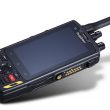Battery technologies for critical applications:
Various battery chemistries are evaluated not only on the merit of long talk-time but also with respect to operational costs, exercise requirements, self-discharge and load characteristics.
For many years, nickel-cadmium (NiCd) was the only practical battery for portable radios, cellphones, laptop computers and video cameras. The need for increased talk-time demanded the development of alternative chemistries. As a result, new battery types have emerged that provide twice the energy densities as the standard NiCd.
Will the new generation batteries eventually replace the classic NiCd? That depends on the position the NiCd will hold in the future and the pros and cons of alternative chemistries. Various battery chemistries have been evaluated not only on the merit of long talk-time but also with respect to operational costs, exercise requirements, self-discharge and load characteristics.
Nickel-cadmium – Available since early 1950, the NiCd continues as the most commonly used battery today. It provides good load characteristics, and it is economically priced, simple to use and forgiving when abused. The main applications are portable radios, cellular phones, video cameras, power tools and some biomedical instruments.
The NiCd has medium energy density and needs monthly exercise to prevent memory (as in crystalline formation). With proper care, the NiCd provides an impressive 1,500 discharge-charge cycles. At four cents per cycle, the NiCd is the most economical battery available.
Nickel-metal hydride (NiMH) – Introduced in the 1970s but not commercially available until the early 1990s, the NiMH offers 30% higher energy density and has fewer toxic metals than the NiCd. The main applications are cellular phones and laptop computers where high energy is important, regular exercising is not practical and cost is secondary.
The NiMH is more expensive and does not have the same proven track record as the NiCd. The charge algorithm is more complex and requires a longer charging time than the NiCd. In addition, the self-discharge is higher and the load characteristics are less favorable than that of the NiCd. Memory is not as prevalent as with the NiCd, although it is recommended to exercise the NiMH once every three months. The expected cycle count is 500 at a rather high 16 cents per cycle.
Sealed lead-acid (SLA) – Known in the automotive industry as the flooded type, the SLA has existed in various formats since the 1960s. It is commonly used where bulk power is required, weight is not critical and cost must be kept low. Applications include wheelchairs, uninterruptible power supply (UPS) units, emergency lighting and some portable biomedical equipment.
The SLA has a low energy density and must be kept in a charged condition at all times. There is no memory effect, but the SLA should receive a topping-charge every few months to maintain good charge acceptance. Unlike the NiCd and NiMH, the SLA cannot be fast-charged. A typical charge takes about 10 hours. The load characteristic is moderate, but the self-discharge is low. The expected cycle count is between 200 and 300 at a cost of 10 cents per cycle.
Lithium-ion (Li-ion) – New on the market and only available in limited supply, the Li-ion provides an energy density that is twice that of the NiCd and has the lowest self-discharge among rechargeable batteries. There are two basic types of Li-ion: the Sony, with an end-of-discharge threshold of 2.5V on a linear discharge curve, and the Sanyo, Matsushita, Toshiba, Hitachi and Molicel that discharge to 3V on the preferred flatter curve (similar to NiCd with sharp knee point). For safety and longevity, each battery pack must contain a control circuit to limit the voltage peak during charge and voltage drop on discharge. Additional safety measures include current-limiting, temperature-sensing and high-pressure shut-off. Typical applications are cellphones, laptop computers and video cameras. The Li-ion contains no lithium metal and is safe if used as directed.
The Li-ion has no memory, its charge time is three to six hours, and the expected cycle count is 300-500. The load characteristic is better than that of the NiMH and SLA but not as good as the NiCd. Because of the high battery price, the operational cost is an astonishing 25 cents per cycle. With better manufacturing techniques and the replacement of cobalt with less expensive materials, the price of the Li-ion is expected to drop by half by 2000.
Battery maintenance A difficulty all battery users face is not knowing when the battery power runs out. For the first year while the equipment is new, everything seems to work fine. As the battery ages, a gradual loss of charge acceptance occurs without the user knowing. Although fully charged, the battery eventually regresses to a point where it may hold less than half of its original capacity, resulting in unexpected down time.
All nickel-based rechargeable batteries are affected by “memory” to varying degrees. This phenomenon also applies to NiMH cells, but to a lesser extent than NiCds. Memory is a buildup of crystalline formation on the cell plates that robs the battery of its capacity. It occurs most commonly when the battery is left in the charger for days or is repeatedly recharged without a periodic full discharge. The capacity loss caused by memory is, to a certain extent, reversible.
To regain lost capacity and to keep a battery fleet in peak performance, nickel-based batteries must be discharged periodically to 1V per cell, a procedure also known as exercise. The recommended frequency of exercising the NiCd is once per month, whereas the NiMH should be done once every three months. Because of its shorter cycle life, it is not recommended to overexercise the NiMH.
If no exercise is applied for several months, the crystalline formations ingrain themselves, making it more difficult to dissolve them. In such a case, exercise is no longer effective in restoring a battery, and recondition is required. Recondition is a slow, deep discharge that is applied below the 1V per cell threshold. Lab tests have shown that a NiCd cell should be discharged to at least 0.6V to dissolve the more resistant crystalline buildup effectively. When applying recondition, the recondition current must be kept low to prevent cell-reversal, a state in which the cell polarity reverses, rendering it defective.
As previously mentioned, the NiCd should provide a service life that is substantially longer than that of the NiMH. If this cannot be achieved, either the charger is unsuitable, the cells are of inferior quality or the NiCd battery is not being properly exercised. Using good-quality cells and a suitable charge algorithm, NiCd batteries tested in our laboratory consistently provide more than 4,000 full discharge-charge cycles. Similar results should be achievable in the field.
Battery analyzers During the past few years, battery analyzer technology has advanced significantly. No longer are we limited to analog units with fixed charge-discharge currents and programs that only apply one or two discharge-charge cycles.
One particular programmable battery analyzer is capable of servicing NiCd, NiMH, SLA and Li-ion batteries simultaneously. The batteries are tested against preset voltage and current ratings that can be entered though the keypad. Configured battery cups accommodate all common batteries; uncommon batteries interface through smart cables. An optional printer generates battery service reports and labels. (See Photo 1 on page 28.)
Another, more advanced battery analyzer evaluates the condition of each battery and implements the appropriate service to restore its performance. A recondition cycle is applied automatically if a user-selected capacity level cannot be reached. Battery chemistry, voltage and current rates are user-programmable. These characteristics are stored in interchangeable cups and configure the analyzer to the correct function when installed. Each cup holds as many as 10 battery codes to service all battery types within a product family, eliminating the need to reprogram for each battery type. Battery-specific cups are available for all common batteries; user-programmable smart cables service batteries for which no cup is on hand.
Because the service is performed against preset characteristics, the batteries are charged and discharged under true field conditions, a feature that provides accurate test results as well as fast service. Batteries with shorted, mismatched or “soft” cells are identified in minutes, their deficiencies are displayed and, if necessary, the service is halted. The derived battery capacities are organized into residual and final capacities. Problems, such as insufficient capacity reserve at the end of field use, are easily identified to allow necessary corrections.
To enable service of all batteries, including those with known defects, an analyzer must feature multiple, redundant, charge-termination algorithms to ensure that the batteries are charged quickly and safely and without overheating. Without this provision, battery packs with shorted or mismatched cells may sustain damage caused by overcharge. User-selectable programs address the different battery needs and include a prime mode to prepare a new battery for field use; an auto mode to recondition batteries unable to reach a user-set target capacity; and a custom mode to allow the operator to set a sequence of unique cycle modes composed of charge, discharge, recondition, trickle charge or any combination thereof, including rest periods and repeats.
An important feature of an analyzer is easy operation, a quality that is especially useful when confronted with servicing an ever-increasing fleet of different battery types. It is more convenient to read the test results in percentage of the rated capacity rather than in milliampere hours (mAh) because this frees the operator from memorizing the ratings of each battery tested. In addition, simple “pass-fail” lights help to distinguish good batteries from unserviceable ones at a glance.
Analyzers capable of printing service reports and battery labels simplify the task of keeping track of the batteries serv-iced. By attaching the label to the batteries, the user is informed of the battery’s history and pending maintenance. To keep current with the latest battery developments, a battery analyzer should allow firmware upgrades to enable servicing new chemistries when introduced.
Advanced battery analyzers are capable of connecting to a computer to form a network servicing more than 100 batteries simultaneously. Battery test results are fed into a database from which inventory, service reports and graphs are generated. User-friendly software allows remote controlling of the analyzers through a central computer keyboard, including the downloading of firmware into the analyzer’s flash memory to upgrade existing firmware, or to custom-program an analyzer for a special function. The battery ID number and characteristics can be printed on bar code labels to be attached to the batteries. By swiping the bar code with a wand, the battery is identified, and the analyzer is automatically configured for the correct battery parameters.
Summary Battery performance has improved significantly during the past few years. In addition, the need for regular exercise to keep the batteries in good condition has been reduced or eliminated altogether with some chemistries. Interestingly, though, the one battery chemistry that offers the best load characteristics with the lowest operational cost is also the one with the highest exercise requirement. With today’s advanced battery analyzers, the task of providing quality battery maintenance has been much simplified.
Buchmann is founder and president of Cadex Electronics, Burnaby, British Columbia, Canada.












